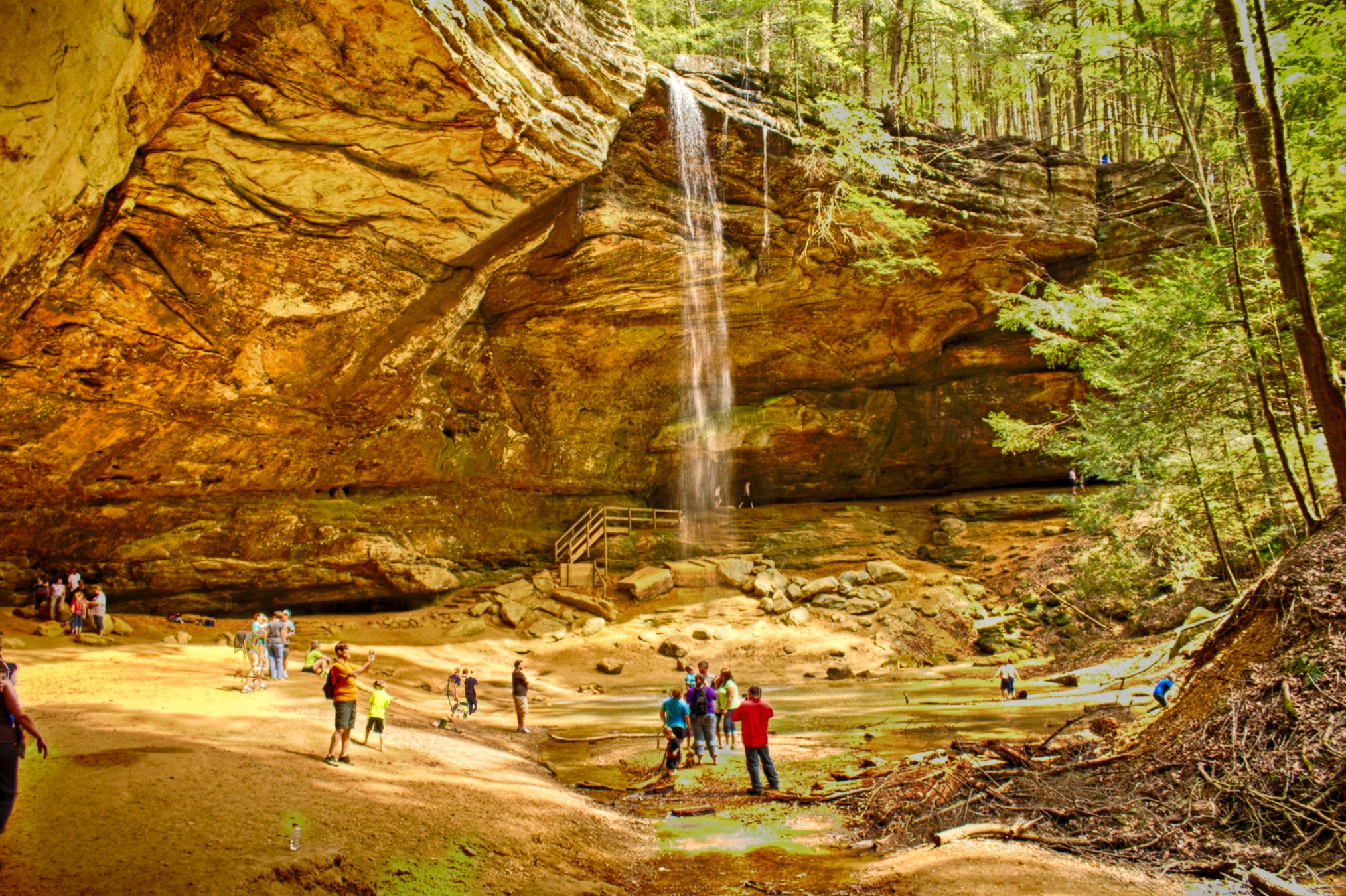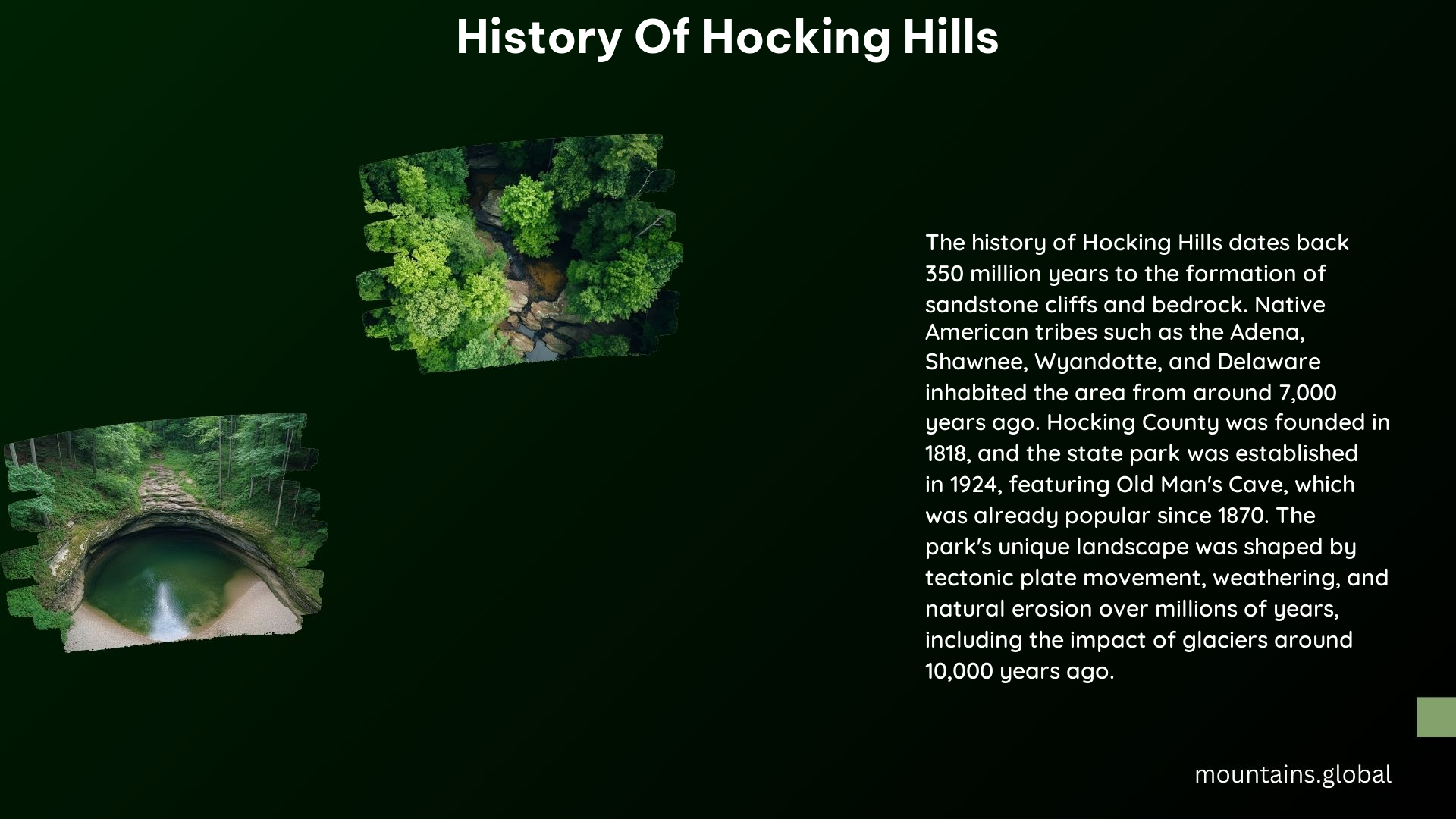The history of Hocking Hills is a rich and diverse one, spanning millions of years from geological formation to Native American settlements and modern-day tourism. This region in Ohio has a fascinating past that has shaped its unique natural beauty and cultural heritage.
Geological Formation

Hocking Hills was formed over 330 million years ago when the area was covered by the Atlantic Ocean. The ocean’s currents deposited sand and gravel, which eventually bonded with silica to form the Black Hand Sandstone that underlies the area. The Appalachian Mountains’ formation caused the landscape to change, and the Wisconsin Glacier’s melting around 10,000 years ago led to dramatic changes in the area, including the creation of tunnels and gorges in the soft middle layer of sandstone.
Native American Settlements

The Adena culture, which lived in Ohio from around 1 A.D. to 800 A.D., was one of the first inhabitants of the area. Later, the Fort Ancient Indians and other Native American tribes such as the Wyandot, Delaware, and Shawnee traveled through and lived in the area. The Wyandot tribe had a village called Oldtown along the Hocking River near present-day Logan, and the Delaware and Shawnee nations frequently hunted and traveled through the region.
European Settlement and Development
Permanent settlement by pioneers did not occur until the late 1790s. The Northwest Ordinance of 1787 and the Treaty of Greenville in 1795 cleared the way for settlement. The area’s natural resources, including game and timber, encouraged settlement. The first settlers found an abundance of game for food, and the small rock shelters provided natural den sites for bears. The area was also home to wood bison, which occasionally wandered from the western plains into the flat river bottoms.
Creation of Hocking Hills State Park
In 1924, the state purchased a 146-acre piece of land that contained Old Man’s Cave, officially creating a park overseen by the Department of Forestry. Throughout the 1920s and 1930s, more land was purchased, and roads and paths were constructed. In 1949, the Department of Natural Resources and the Division of Parks were formed. The current Hocking Hills State Park is made up of six connected areas: Ash Cave, Cantwell Cliffs, Cedar Falls, Conkle’s Hollow, Old Man’s Cave, and Rock House.
Modern-Day Tourism
Today, Hocking Hills State Park is a popular tourist destination, known for its natural beauty, hiking trails, and scenic views. The park features many private inns, campgrounds, cabins, restaurants, and other related businesses, including a recently developed zipline.
Old Man’s Cave
Old Man’s Cave is a significant attraction within Hocking Hills State Park. The cave features a gorge cut into 150 feet of Blackhand sandstone, exposing the natural history of the area. The cave was formed by a combination of tectonic plate movement, weathering, and natural erosion over millions of years. It is believed that the cave was used by Native American tribes and later by trappers, with one trapper leaving his mark and earning the cave its nickname.
Hocking Hills Today
Hocking Hills State Park is surrounded by 9,238 acres of the Hocking State Forest, administered by the ODNR Division of Forestry. The park is known for its pristine character, with trails, stone steps, bridges, roads, and tunnels constructed by the Works Progress Administration (WPA) in the 1930s. The area is also home to a variety of flora and fauna, including hemlocks, birches, and Canada yew, which are remnants of the glacial period.
